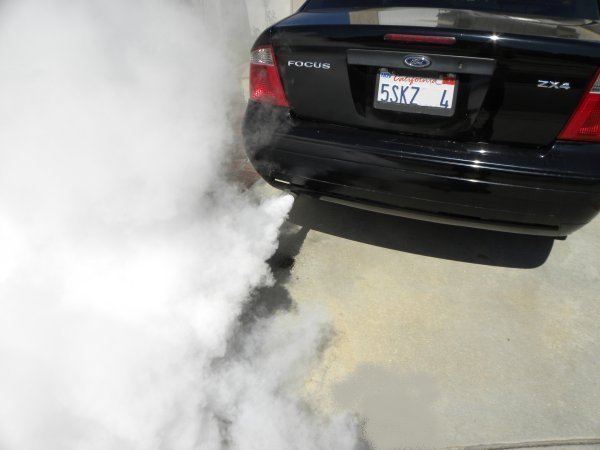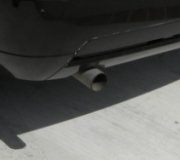Sounds like your heater controls are vacuum-operated and you're losing vacuum due to increased acceleration. That is somewhat normal but it's a valuable clue. It would seem the engine is down on power so you have to push harder on the gas pedal, hence the drop in fuel mileage. By pushing the gas pedal further, engine vacuum goes down. That is perfectly normal and expected, but when that vacuum gets low enough, the heating system has actuators that are spring-loaded to switch to the defrost setting. That's for safety in the event of a failure in the system. Your feet might freeze but your windshield will be clear. Since the vacuum didn't fully disappear, the actuators might not go to the full defrost position. I don't think there's anything wrong with the heater controls unless the vacuum check valve is stuck open. You need to look at why you need more power.
A dragging brake is a common cause of decreased fuel mileage. If you stop on a slight incline, shift to neutral, and release the brakes, the truck should creep down hill on its own.
An exhaust leak ahead of the first oxygen sensor can cause excessive fuel consumption. Between the pulses of exhaust gas flow, the momentum creates pulses of vacuum that draw in fresh outside air. The oxygen in that air is detected by the oxygen sensor as a lean condition. The Engine Computer responds by requesting additional fuel from the injectors. No matter how much extra fuel goes in, there will always be that unburned oxygen coming in from the leak. O2 sensors don't detect unburned fuel, just unburned oxygen.
GM also has a huge problem with injector flow rates that shows up at higher mileages. They do not flow-match them on the assembly line. Other manufacturers buy their injectors in flow-matched sets so they rarely have a problem. GM grabs a handful of injectors out of a bin and randomly throws them in an engine. As they wear a little, some will flow less resulting in a lean cylinder. The unburned oxygen is detected but the computer doesn't know it's due to just one cylinder so it commands more fuel from all of the injectors. That extra unburned fuel from three cylinders is wasted and produces no power. That will not show up as a sudden loss of fuel mileage. It will gradually get worse over time.
If you recently moved to California with their idiot politicians, use of their reformulated gasoline will cause a ten percent drop in fuel mileage. That has caught a lot of unsuspecting owners by surprise.
If you have a fuel pressure regulator on the engine, pull the vacuum hose off and check for raw fuel. If there's any wetness, the regulator is leaking unwanted fuel into the engine and must be replaced.
A mechanical problem inside the engine can cause a vibration that is picked up by the knock sensor. The Engine Computer will retard ignition timing in an attempt at stopping that knock from occurring. That will reduce power and increase fuel consumption. That is found by watching what the computer is doing to timing on a scanner that displays live data on a test drive.
You can also view short and long-term fuel trim data on the scanner. If the numbers are high positive, the computer is requesting more fuel in response to something. If the numbers are high negative, the computer is requesting less fuel but is not getting the proper response.
SPONSORED LINKS
Wednesday, January 4th, 2012 AT 12:39 AM



